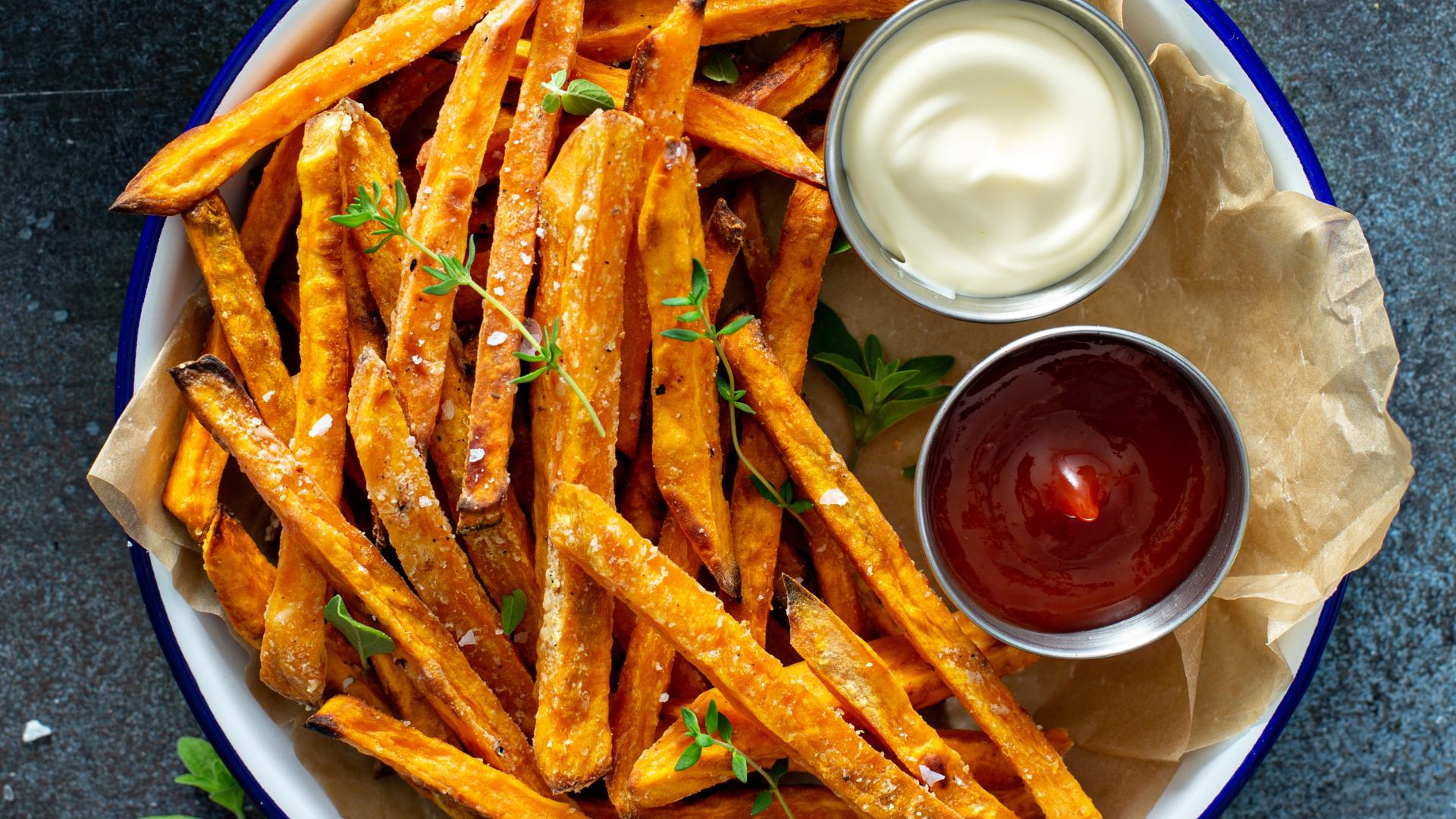In our culinary journey, sauces often serve as the bridge between a mere meal and a memorable dining experience. Today, we delve into the realm of sweet and salty flavors, exploring how these can transform your ordinary recipes into culinary masterpieces. The strategic use of sauces lets us embrace a world of taste, offering a symphony of savory and sweet notes that can enhance, balance, and elevate any dish. Join us as we unravel the nuances of crafting delectable sauces that promise to tantalize your taste buds.
- 1 The Art of Balancing Sweet and Salty
- 2 Exploring Classic Recipes with a Twist
- 3 Crafting Your Signature Sauce: Tips and Techniques
-
4
FAQ
- 4.1 What are some popular sweet and salty sauces that can enhance my dishes?
- 4.2 How can I incorporate sweet and salty sauces into my cooking?
- 4.3 Are there any dietary considerations to keep in mind when using sweet and salty sauces?
- 4.4 Can I make sweet and salty sauces at home?
- 4.5 What dishes pair well with sweet and salty sauces?
The Art of Balancing Sweet and Salty
Achieving the perfect balance between sweet and salty in sauces is akin to composing a melody. The right proportion can create harmony in your dishes, while a mismatch may overpower the flavor profile you’re aiming for. Whether we’re discussing a rich brown sugar glaze for roasted meats or a tangy soy drizzle for stir-fried vegetables, the balance is key.
Sweet Ingredients:
- Sugar: Often the foundational sweetener in many sauces. It integrates effortlessly, offering an underlying sweetness that doesn’t dominate.
- Honey: Adds a floral note and a robust sweetness that can pair beautifully with tangy or spicy elements.
- Fruits: Purees and juices like apple, orange, or mango can introduce a natural sweetness and an added layer of depth.
Salty Elements:
- Soy Sauce: This umami powerhouse adds depth and a savory edge, complementing the sweetness perfectly.
- Fish Sauce: A few drops can elevate the whole flavor profile, adding a complex savory note.
- Salt: Sometimes, simplicity is best. Salt can enhance both sweet and umami elements, making flavors pop.
When creating a sweet and salty sauce, tasting as you go is essential. Start small and build. A sauce that tastes just right cold can alter once heated and integrated into a dish. Remember, spices like ginger or garlic can add another layer of complexity, making your sauce truly unforgettable.
Exploring Classic Recipes with a Twist
In the world of cooking, classic recipes offer a foundation upon which we can innovate. By adding a sweet and salty twist, we can transform venerable dishes into modern classics. Let’s explore some traditional recipes and see how a well-crafted sauce can make all the difference.
Sweet & Salty Teriyaki Chicken:
This Japanese classic is a staple in many households. The sweetness of mirin and sugar combined with the salty depth of soy sauce creates a glaze that’s both comforting and exciting. By introducing a touch of fresh orange juice or a hint of chili flakes, we can add unexpected layers of flavor.
Honey Soy Glazed Salmon:
Salmon’s rich, buttery nature is the perfect canvas for a sweet and salty sauce. A glaze of honey, soy sauce, and a splash of lemon juice can enhance the fish’s natural flavors. A sprinkle of sesame seeds or a dash of ginger can add an umami punch that complements the sweet and savory elements.
Pork Tenderloin with Spicy Peach Sauce:
A sweet fruit-based sauce can elevate pork like nothing else. Blending fresh peaches with a touch of soy, garlic, and a pinch of red pepper flakes results in a sauce that dances between sweet, spicy, and savory.
Each of these dishes showcases how a thoughtful sauce can redefine a classic recipe, providing an exciting twist that keeps the dish familiar yet refreshingly new.
Crafting Your Signature Sauce: Tips and Techniques
Creating a signature sauce is about understanding the ingredients at your disposal and how they interact. By mastering some basic techniques, we can produce sauces that are unique to our cooking style and preferences.
Building a Base:
A thick base can be achieved using cornstarch, flour, or reducing the sauce by simmering it. This base carries and amplifies the flavors you introduce.
Balancing Flavors:
Taste frequently. Adjust the sweetness and saltiness with small increments of sugar or soy sauce. Herbs and spices can offer another dimension: think thyme, basil, or even a touch of cinnamon.
Incorporating Acidity:
A dash of vinegar or a squeeze of citrus can lift a sauce, balancing the sweet and savory notes while adding brightness to the dish. Experiment with rice vinegar, balsamic, or lime.
Heat & Spice:
If a spicy edge is desired, incorporate chili flakes, hot sauce, or even fresh chilies. These elements should complement, not overpower, the sauce’s primary flavors.
Experiment with Textures:
Consider adding crushed nuts for a crunchy texture or blending in smooth, roasted garlic for a creamy effect. Texture can significantly impact how a sauce interacts with a dish’s primary ingredient.
By trying different combinations and techniques, we can craft unique sauces that reflect our personal tastes and can become signature elements in our cooking repertoire. As we conclude our exploration into the world of sweet and salty sauces, we hope to have inspired a culinary curiosity. These sauces are more than just an accompaniment—they’re an integral part of the flavor narrative of any dish. By experimenting with savory and sweet elements, playing with textures, and understanding the balance of ingredients, we can elevate ordinary recipes to extraordinary levels. Let us continue to embrace the art of sauce-making, enriching our culinary experiences with every bite. Here’s to more flavorful, memorable meals as we embark on a delicious new year!
FAQ
What are some popular sweet and salty sauces that can enhance my dishes?
Some popular sweet and salty sauces that can elevate your meals include teriyaki sauce, honey mustard, sweet chili sauce, hoisin sauce, and balsamic glaze. These sauces blend sweetness with a hint of saltiness to create a balanced flavor that complements a variety of dishes.
How can I incorporate sweet and salty sauces into my cooking?
You can incorporate sweet and salty sauces into your cooking by using them as marinades, glazes, or dipping sauces. Try marinating chicken or tofu in teriyaki sauce, using balsamic glaze to drizzle over roasted vegetables, or serving sweet chili sauce alongside spring rolls or grilled meats.
Are there any dietary considerations to keep in mind when using sweet and salty sauces?
Yes, when using sweet and salty sauces, consider the sugar and sodium content, especially if you are monitoring your intake for health reasons. Opt for low-sodium or reduced-sugar versions when available, and use these sauces in moderation to maintain a balanced diet.
Can I make sweet and salty sauces at home?
Yes, making sweet and salty sauces at home is quite simple and allows you to control the ingredients. For example, you can create a homemade teriyaki sauce using soy sauce, sugar, ginger, and garlic, or a honey mustard sauce by combining mustard, honey, and a touch of vinegar.
What dishes pair well with sweet and salty sauces?
Sweet and salty sauces pair well with a wide range of dishes, including grilled meats, roasted vegetables, stir-fries, and salads. They can also be used to enhance the flavors of appetizers like spring rolls or chicken wings, as well as as a finishing touch on pizzas or sandwiches.

